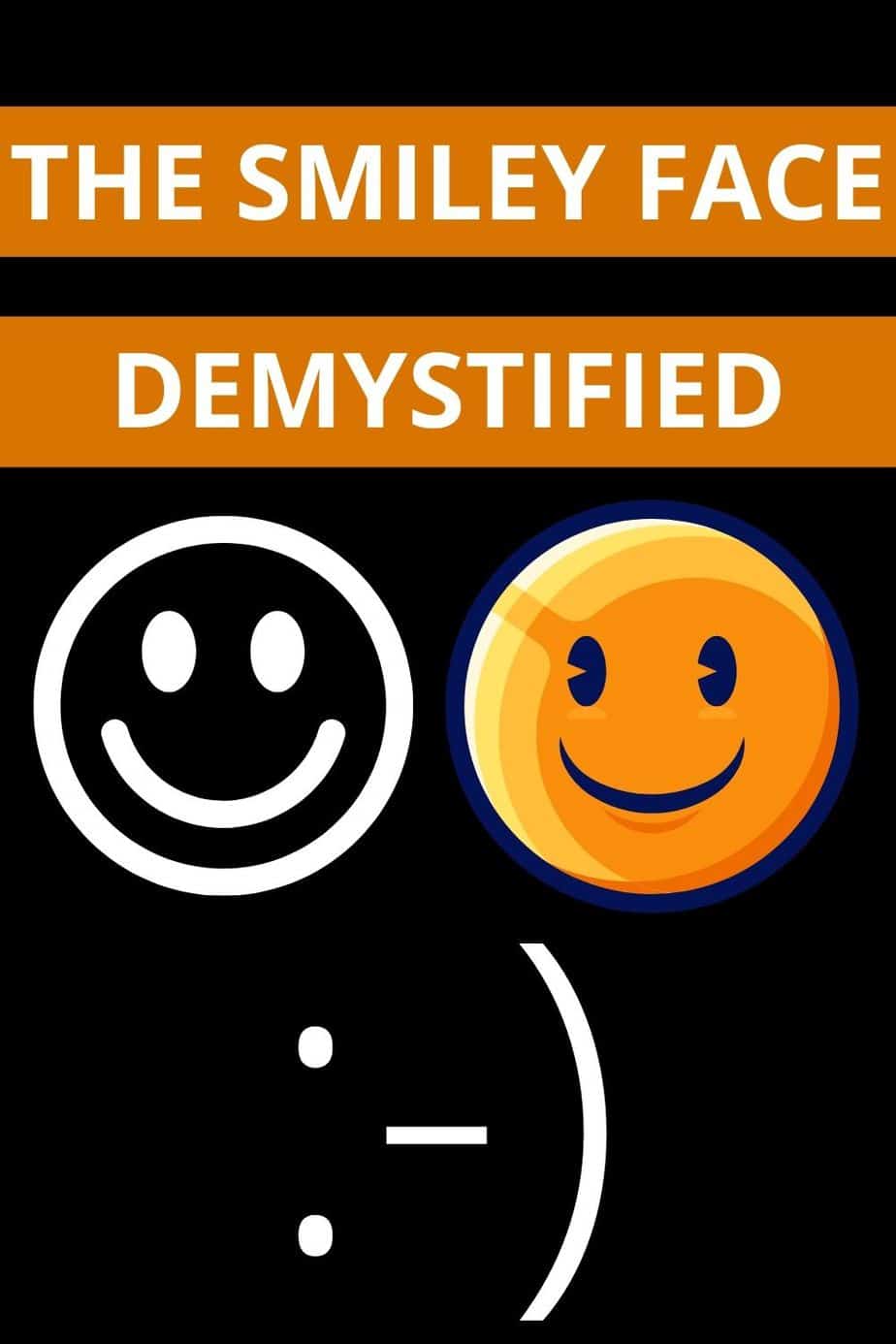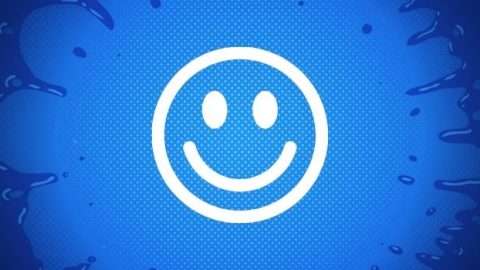Language evolves constantly, and the presence of the Internet has really sped things up.
One case in point are emoticons like the humble :). Not only do these pictographic characters express emotion, they’ve now been around long enough that their meanings are ambiguous.
In this post, we’ll look at three possible meanings for the smiley emoticon.
[toc]
What is the Meaning of the emoticon ☺️ ?
Whether you use the special icon for ☺, insert the picture-based emoji 🙂 or type it out with :-), the smiley face is one of the most popular elements of writing online. The basic meaning of the smiley face is the same as the meaning of someone smiling in real life. It shows a happy, upbeat attitude. However, some people use ☺ to show they are joking about something, while others may use it more maliciously to be passive aggressive.
A sincere smile
In almost all cases, the meaning of the emoticon ☺️ is just that the person writing the message is in a good mood.
You can think of this as a text-based smile, intended to show good will, happiness or some other positive emotion.
Unless you have some specific reason to think that the smile might be less than serious, it’s best to just take it at face value (pun definitely intended).
Examples
This person says they’re excited, and without context suggesting otherwise it’s best to just assume they’re being honest.
“I’m thankful you’re my friend. ☺️”
“Me too. ☺️”
Truly, a heart-warming exchange. This is a great example of how to use a ☺️ to show someone you’re happy.
The “joke” emoticon: the origins of ☺️
Although nobody knows the date of the first use of a smiley face for sure, the earliest recorded example comes from a 1982 message board hosted out of Carnegie Mellon University, where it was suggested as a way to show that a post was a joke, rather than serious.
In this particular case, the smiley face looked like this: [:-)] (without the brackets!)
While the “nose” represented by the minus sign has fallen somewhat out of favor, this is still a very recognizable smiley face.
The symbol spread from the original post at Carnegie Mellon to online systems at other universities (remember, this was before mass availability of the Internet), and has been a popular source of Internet humor ever since.
Examples
Probably, we would assume this was a joke no matter whether it was followed by a smiley face or not.
This example, however, shows how useful the smile can be.
Without that, there’s nothing at all to suggest this sentence might be a joke, because tone of voice, facial expression and other nonverbal clues are all missing in a text format.

Passive-aggressive uses and sarcasm
Unfortunately, the “joke” meaning and the “happy” meaning can lead to some awkward uses (and abuses) of the innocent little smiley face.
Some people use it to be sarcastic, while others use it to make passive-aggressive comments under the guise of being friendly.
In short, while most uses of the face are sincere, people can also use it to show their frustration or disappointment with something in a relatively low-stakes way.
For example, telling your boss you hate them is unlikely to go over well, so adding ☺️ after it gives you cover to say you were just joking if they get upset.
This can be cathartic for the sender, as well as just an opportunity to be a jerk, but it’s pretty confusing all the same.
It’s worth noting that all language changes over time, and the evolution of the smiley face to have different meanings is not a surprise.
It’s awkward that these two meanings directly contradict one another, but there’s nothing inherently unique to this.
For example, look at the word “literally,” which now has two definitions in most dictionaries because the word, originally used to signify that things were not exaggerations, now tends to be used more commonly as a way to exaggerate things.
Staring into this abyss for too long will literally make your head explode. Or will it?
The distinction between whether someone is using a ☺️ in a sentence sincerely or sarcastically isn’t quite as extreme as “literally,” but it’s confusing all the same.
Your best bet is to just assume the person smiling is actually happy. If you absolutely need to know one way or the other, you can always ask.
Examples
“I need you do do an extra shift tomorrow, Susan.”
“Ok, great. ☺️”
Is Susan excited to work an extra shift? Is she actually mad? Without knowing Susan, it’s impossible to tell.
“I’m glad you finally responded to my email. I was starting to think you were ignoring me! ☺️”
“Sorry about that. I’ve just been very busy. I’m sure you understand what that’s like. ☺️”
“What’s that supposed to mean?”
“Nothing at all! ☺️”
This exchange shows just how much trouble ☺️ can be when someone is using it less than sincerely.
The first person could be using it in a way that means they didn’t really think they were being ignored, and are just joking.
Or they could actually be really upset, using the cover of ☺️ as a way to vent their frustration safely.
It’s hard to read any kind of good intention into the second ☺️, though. At least to me, it looks like a very passive-aggressive way of saying, “you don’t know what being busy is like at all.”
The first person in the conversation agrees, but their question is met with yet another ☺️. Yikes!
This exchange shows how dangerous this little face can be. Especially in formal cases where you need to be understood completely, it’s best to leave out emoji, emoticons or other forms of Internet jokiness instead.
But is it an emoji or an emoticon?
There’s some debate over the best word for character-based faces like 🙂 and :(.
Do you call them emoji, emoticons, smileys or something else entirely?
The two most common words are emoji and emoticon.
Emoticon is a portmanteau word, meaning it’s two other words smashed together. In this case, the words are “emotion” and “icon.” Put them together and you get emoticon, an icon used to express emotion.
Emoji is a little harder to figure out, unless you happen to be fluent in Japanese.
That’s because this option is an actual Japanese word, written in kanji as 絵文字 (emoji).
Interestingly, despite both emoticon and emoji starting with “emo-“, they don’t share a common meaning. The 絵 (e) means “picture” in Japanese, with 文字(moji) meaning “written character.”
Together, emoji literally means “pictograph,” although these days in Japan its prevalence on phones has caused the word’s original meaning to fade a little.
Technically speaking, emoticons are written out using ASCII characters like the famous :-).
Emoji, on the other hand, are actual pictures inserted into the body of a piece of text. These include the ever-present yellow smiley face and its companions, or even images saying “cool” or anything else.
No matter what you call them, though, and no matter exactly what the meaning of the emoticon ☺️ is for you personally, it’s pretty clear that smiley faces are here to stay.

Hey fellow Linguaholics! It’s me, Marcel. I am the proud owner of linguaholic.com. Languages have always been my passion and I have studied Linguistics, Computational Linguistics and Sinology at the University of Zurich. It is my utmost pleasure to share with all of you guys what I know about languages and linguistics in general.

